#funerary portrait
Text
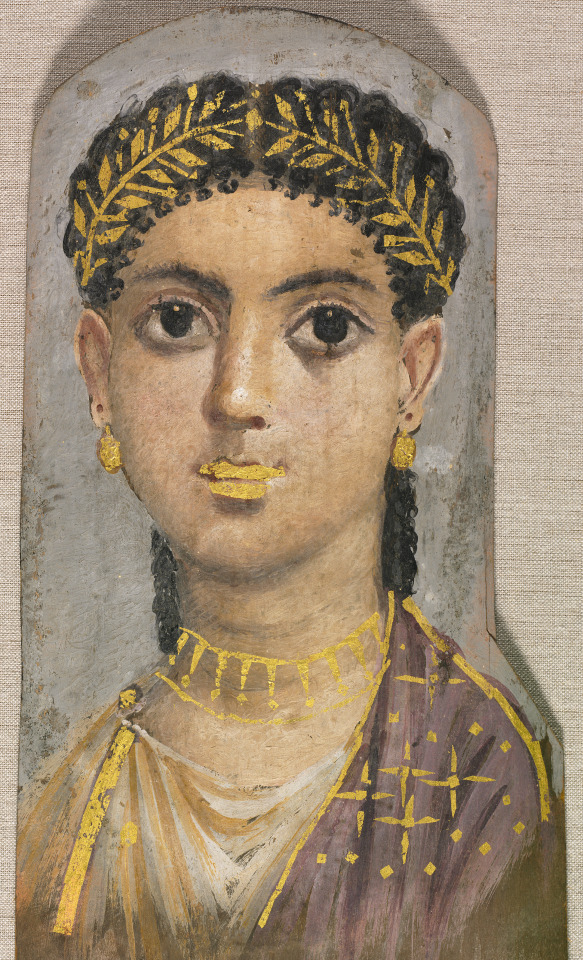
Mummy Portrait of a Young Roman Girl, ca.AD 25-37
Roman Egypt, late Tiberian
The Cleveland Museum of Art
#roman empire#egypt#roman egypt#fayum#fayum portrait#art#female portrait#female#portrait#funerary portrait#fine art#classical art#brunette#woman#black hair#black eyes#gold leaf#laurel crown#rome#tiberius
92 notes
·
View notes
Text

Tony Johannot, engraved by Gerard - Drawing a funerary portrait, illustration from 'Mademoiselle de Montsabrey' by Jules Sandeau (1811-83).
#Tony Johannot#funerary portrait#Mademoiselle de Montsabrey#dead#death#death bed#on your knees#praying#mourning#crying
1 note
·
View note
Photo

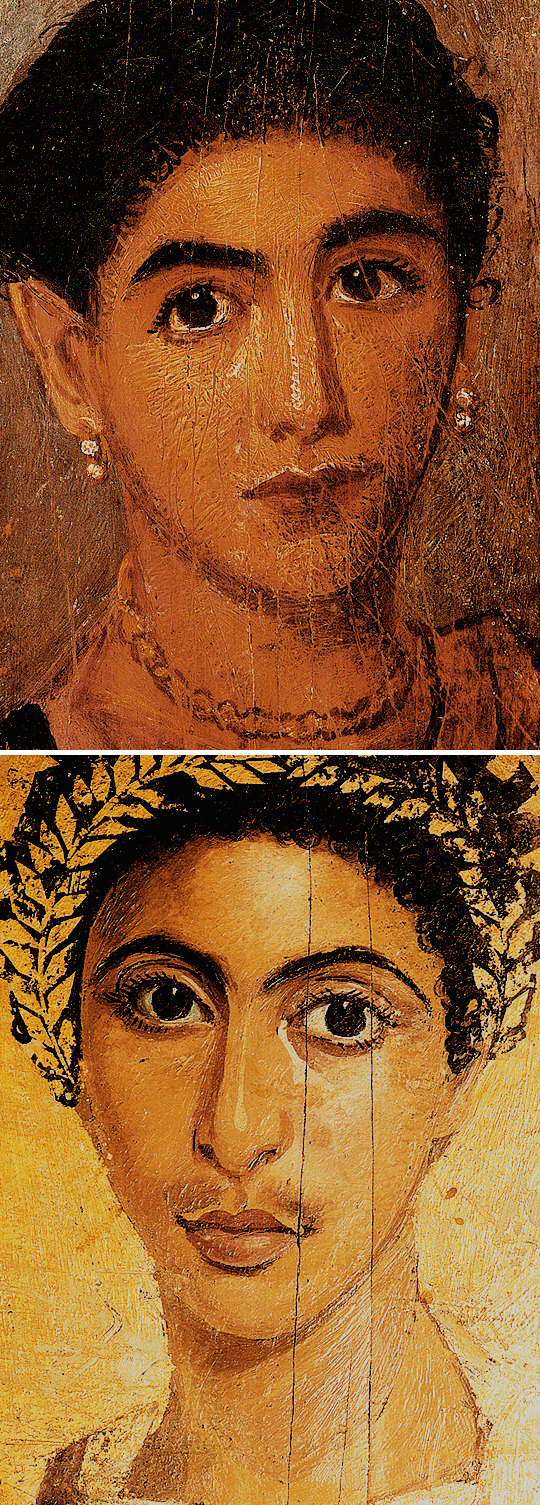




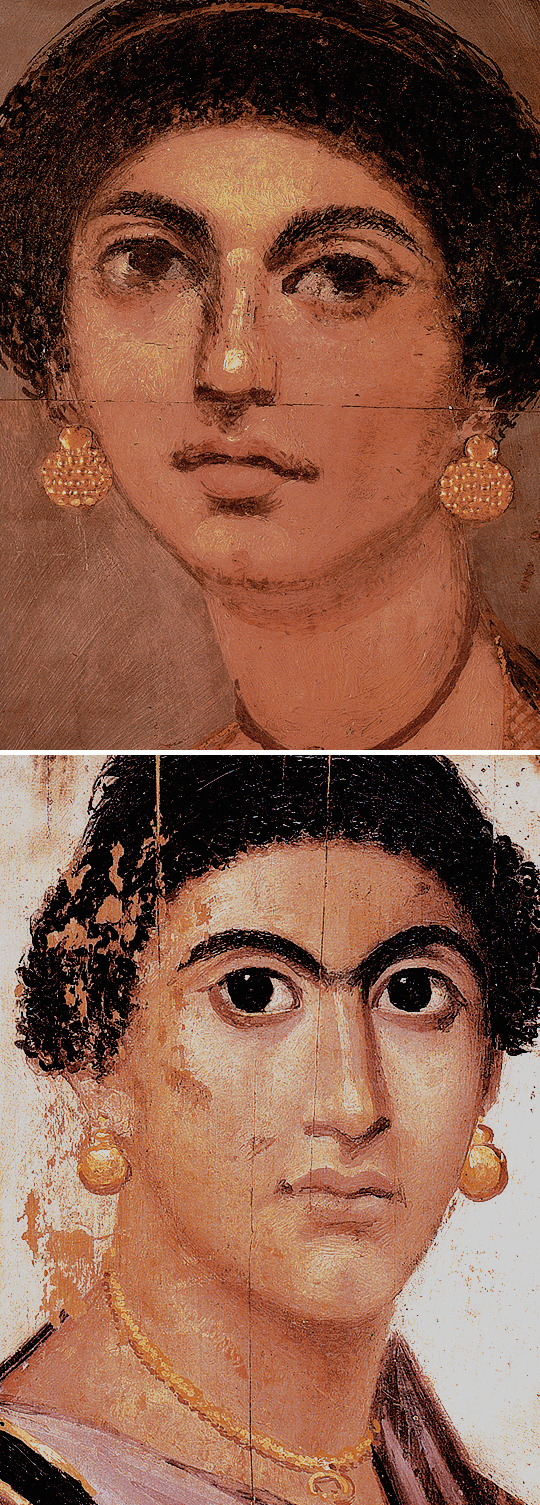

PAINTED MUMMY PORTRAITS OF EGYPTIANS DURING THE ROMAN PERIOD
The painted mummy portraits of Roman Egypt almost uncannily bring before us individuals from about two thousand years ago. The powerful promise of the ancient Egyptian afterlife, the pervasiveness and coherence of Roman culture, and the strong naturalism of the Graeco-Roman painting tradition combined to produce these arresting portraits of the gentility of the towns and cities of Egypt beyond the great metropolis of Alexandria. —Ancient Faces: Mummy Portraits from Roman Egypt (ed. Susan Walker) (1997)
#egypt#ancient egypt#egyptology#archaeology#historyedit#mine#my edit#fayum portraits#roman period#mummy#funerary
3K notes
·
View notes
Photo

Uknown
_
Fayum mummy-portrait of a lady, 54-68 AD, found in Hawara, Egypt, a site near the Fayum oasis. On display in 2009 exhibition "Roman Imperial Painting", Rome. (AP Photo/Pier Paolo Cito)
The Fayum portraits date to the Imperial Roman era, from the late 1st c. BC or the early 1st c. AD onwards. Recent research suggests their production ended in the middle of the 3rd c. AD. They are survivors of the panel painting tradition of the classical / Greco-Roman world, continued into Byzantine, Eastern Mediterannean, and Western traditions in the post-classical world, including the local tradition of Coptic iconography.
http://elogedelart.canalblog.com/archives/2009/09/26/15207626.html
https://historicaleve.com/ancient-faces-fayum-mummy-portraits/
https://realhistoryww.com/world_history/ancient/mummy_portraits_2.htm
https://en.wikipedia.org/wiki/Fayum_mummy_portraits
48 notes
·
View notes
Photo


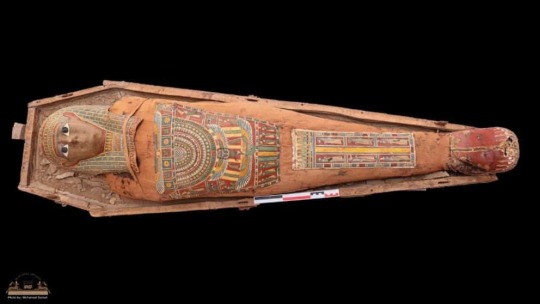






Greek-Roman Funerary Building and Mummy Portraits Discovered in Egypt
The building and the paintings date back to the Ptolemaic and Roman eras.
A huge 2,300-year-old funerary building and a number of mummy portraits were discovered in Egypt's southern province of Fayoum, about 37 miles (60 kilometers) south of Cairo, the country's antiquities ministry said on Thursday.
The building and the paintings, which are famously known as the Fayoum portraits, date back to the Ptolemaic and Roman eras in the 3rd century B.C. They were found in Fayoum's Gerza village, which was known as Philadelphia during the Roman period.
"The discovered structure is a large building styled as a funerary building with colored gypsum tiled floors," Adel Okasha, who heads the antiquities department in Cairo and Giza, said in a statement. "To the south of it, there is colonnade hall where the remains of four columns were found."
The uncovering of the paintings was also hailed as one of the most important archeological discoveries this year, as it marked the first time such portraits were found in more than 110 years.
In the late 19th century and early 20th century, British egyptologist Flinders Petrie excavated at least 150 mummy portraits at a Roman necropolis in in Fayoum's archeological site of Hawara.
"The discovery shows the diversity and difference in quality of the mummification process during the Ptolemaic and Roman times based on the financial status of the deceased," said Mostafa Waziry, the head of Egypt's Supreme Antiquities Council.
Waziry also said a "rare terracotta statue of [ancient deity] Isis Aphrodite was discovered inside one of the burials in a wooden coffin," as well as "papyrus-made records" with Demotic and Greek inscriptions that show the economic and religious statuses of the inhabitants of the area at the time.
Egypt, which has invested heavily in ancient discoveries in recent years, is hoping to revive its ailing tourism industry. The country also plans to inaugurate a state-of-the-art museum near the Giza Pyramids, which Egypt says will be the biggest museum in the world dedicated to a single civilization.
By Hatem Maher.
#Greek-Roman Funerary Building and Mummy Portraits Discovered in Egypt#Fayoum#Fayoum portraits#ancient graves#ancient tombs#ancient artifacts#archeology#archeolgst#history#history news#ancient history#ancient culture#ancient civilizations#ancient egypt#egyptian history#roman history
48 notes
·
View notes
Note
Eggie you don't understand what the sight of one Joaquin riding has been doing to my brain and like. also the way his hands are grabbing tight that cord to guide the horse? He's pulling???!!!?!!??? HARD!?!!!!!! and he does that all the time!??? and in some scenes he looks skinny in almost an artie way and this gets in my heart I will never know peace with this man I know that. we will never know peace. if we've to simp over a literal random napoleon so be it
let me say also that the italian translation Napoleone gives on itself the sense of something big because of the suffix -one okay have a nice day ily
FLAE BAE!!!! GIRL!!!! CAN WE FUCKING T A L K ABOUT HOW INSANE THIS SHIT FEELS FROM TRAILERS ALONE???

girl. I was deadass about jokerfriends reuinion over this film. feels like our vibe. back when we were going insane about joeldy and the like. like good god for real. I'm losing my mind at the thought that in a few months a good handful of us old guard joaq enjoyer folks are going to be reduced to ashes by a fucking ridley scott biopic (WHICH AGAIN. VERY FUNNY TO ME BC HE ALSO WAS A PRODUCER ON THE TERROR. BECAUSE THIS KINDA GIVES ME SIMILAR VIBES) AND I'M??? yeah man. yeah. there's a vibe here. (and god girl yeah the pULLING??? AND YEAH THAT SUFFIX IS A FUCKING SIGN MAN!!!! this will get my motor running more than folie a deux ever could. I'm so excited to dive into historical drama hell with you all once more)
#ALSO!!! FUN FACT!!! and I'll probably dm you these later#but a few weeks ago I went to a museum and they HAD!!!! A WHOLE NAPOLEON EXHIBIT!!!#featuring his funerary mask and his ACTUAL HAT FROM THE RUSSIAN CAMPAIGN!!! AND HIS BOOTS!!!#Even saw a shirt of his. and a few portraits and a bust!!!#and I remember turning to my dad when I was looking at it and going 'damn. joaquin was a damn good cast for this'. SERIOUSLY. LOOKED SO#FUCKING SIMILAR!!!!#but anyway. I can't wait to be going insane with you and em this november it's going to be such an exciting time#I WILL have to see it in theaters first but I ABSOLUTELY would stream it with y'all no questions asked
2 notes
·
View notes
Text

Marble bust of a youth. Roman ca. 140 CE. x
The bust may be seen as a funerary portrait. The unusual addition of the lion’s skin, associated with the semi-divine Hercules (Herakles), between the bust and the circular base probably signifies the parents’ wish to glorify their son. Moreover, he is unclothed in a heroic manner. The youth is portrayed as an older boy but his features are still childlike. When acquired by the Museum a century ago, the bust was heavily covered with accretions and was long regarded as authentic. However, after radical cleaning in 1984, the antiquity of the bust was questioned, and it was removed from display. Recent study and re-evaluation, including the identification of the marble as coming from a quarry not far from the city of Aphrodisias in ancient Caria (present-day Turkey), have prompted the sculpture to be reinstated.
100 notes
·
View notes
Text




To any whome it may concern; I am very saddned to announce that Ginger passed away earlier today. Thank you so much for holding her in your thoughts and prayers until now.
While we made some initial progress with her health after finding and rescuing her, the severity of her dysplasia and the time she had spent immobile in the cold led to bowel issues that became quickly critical over the last couple of days—none of which was helped at all by the stress or the gravel she ingested after being abandoned.
Unfortunately, right when we most needed to get veterinary assistance, the weather completely prevented us from seeing the people we had an established treatment plan with. We were going to have to wait another two days to get her seen, which was really distressing, given her rapidly mounting pain. All I could do was pray to my Witch Mother (who oversees death, healing, and family ties).
At the very last second, though, a vet from out of town was able to be contacted, and she changed her plans so she could come to the nearest Humane Society with just enough time for me to reach her. Unfortunately, she didn't believe there was anything else that could be done for Ginger at this point, beyond compassionate euthanasia. At the very least, however, the timing ended up being exactly right for both my husband and my mother-in-law to come during their lunch breaks and send her off lovingly with me. Together, we held her and massaged her, and I whispered a death croon in her ear as she sank into a final rest. We we all wept for the path she came to us on, but we rejoiced for the chance we've had to offer her comfort, love, and companionship over the last week. Despite everything, she had many moments of peace and connection with us, which I hope and believe improved her remaining time.
I really wanted to be able to carry out the funerary rites we normally do, as a final respect for her—which includes cleaning anointing the body and then adorning the dead with local flora for a final mourning portrait—but the harsh weather and frozen ground made a burial exceedingly unrealistic. So, in the end, I took her body to a funeral home that was willing to cremate her. It was upon arriving there that I discovered a patch of white Hellebore nearby, which struck me as auspicious, given their association with death in general, and with my Witch Mother in particular. As such, I plucked a single blossom and used it to take a makeshift mourning portrait, then took the flower home with me to incorporate in a ritual send-off for her spirit, along with a fumigation of Benzoin and a dish of treats she especially enjoyed.
May the Quietus embrace you with all of the kindness and tenderness you deserve, dear Ginger. ♡
#ginger#dog death#pet death#animal death#cw dog death#cw pet death#cw animal death#cw dead animal#bone mother#fuck tumblr for censoring my devotional grieving
48 notes
·
View notes
Text

Egyptian Faiyum Funerary Portrait of a Young Girl
This painting can be dated based on the hairstyle popular at the end of the reign of Emperor Tiberius (reigned AD 14–37).
Traditional Egyptian burial practices continued well into Roman times. These lifelike portraits were made for a specific purpose: to cover the head of the mummified individual represented in the portrait. Typically, they were painted with encaustic (pigment mixed with beeswax) on wooden panels, as was the case here. Less frequently, they were painted directly onto the linen shrouds that covered the mummy. Hairstyles, jewellery, and clothing are carefully rendered according to contemporary fashion. Meticulously rendered details such as skin tone, facial hair, and bone structure suggest a keen sense of the subject's individuality, and with it, an inevitable sense of mortality. The addition of gilded details on the lips and jewellery is a rare detail that alludes to the individual's transformation in death into a blessed spirit, or akh, a being of light.
Cleveland Museum of Art. 1971.137
38 notes
·
View notes
Text

The Death of John of Lancaster, Duke of Bedford - 14 September 1435
Bedford died in Rouen Castle on 14 September 1435 at a critical moment in the war, a week after the English left the congress of Arras unsatisfied in their demands, and a week before the conclusion of peace between France and Burgundy. On 13 April 1436 Paris was reconquered and English possessions, including Bedford's, were confiscated for the crime of lèse-majesté. Normandy was lost by 1450 and by 1453 all France except Calais.
In accordance with the provisions of Bedford's nuncupative will, he was buried 'magnificently' on 30 September in Rouen Cathedral, on the north side of the choir near the high altar, near the other royal tombs. His effigy was destroyed by Calvinists in 1562, but a funerary plaque bearing his arms, heraldic insignia, and Garter collar survived to the eighteenth century [...] The burial was excavated in 1860. A large-framed skeleton was reportedly uncovered, fitting with Waurin's description of Bedford at Verneuil as a man of great physical strength with powerful limbs. [...] He left no legitimate children, but two bastards, Richard and Mary, apparently conceived before the regency. Their mother is unknown. [...]
Bedford's reputation survived the reconquest of France and Normandy. His familia and former captains, such as Sir John Fastolf, are recorded in William Worcester's Boke of Noblesse as lamenting the passing of the regent and what he stood for. In his own century many English and French (especially pro-Burgundian) chroniclers eulogized Bedford; Thomas Basin described him as 'wise, humane and just' (Basin, bk 2, cap. 2). Lively pen portraits of Bedford and Anne of Burgundy are sketched by the Norman chronicler Pierre Cochon and by the anonymous Parisian, the Bourgeois de Paris, who wrote approvingly of Bedford's propensity to build (maçonner) wherever he was. His hot temper emerges in a few episodes, as does his religious orthodoxy. [...] Criticism of Bedford and the regency has been strongest from nationalistic historians of Normandy and partisans of Jeanne d'Arc, in line with the historiography of the Hundred Years' War as it developed in the nineteenth century. Most historians have emphasized his devotion to duty, to his dead brother's intentions, and to the service of his nephew Henry VI. Bedford was a mighty prince, a brave soldier, and a considerable patron and collector. His court and its ceremonies fulfilled a crucial political role in giving an illusion of permanence and stability to the Lancastrian presence in France.
Jenny Stratford, "John [John of Lancaster], duke of Bedford (1389-1435), Oxford Dictionary of National Biography
#ootd#john duke of bedford#historyedit#why does his anniversaries always sneak up on me#historian: jenny stratford#edits
30 notes
·
View notes
Text
Announcing my new sideblog, @welcome-to-the-night-gallery, featuring art of the macabre, numinous, and liminal. These are all artworks originally posted to my other sideblog, @thebardostate.
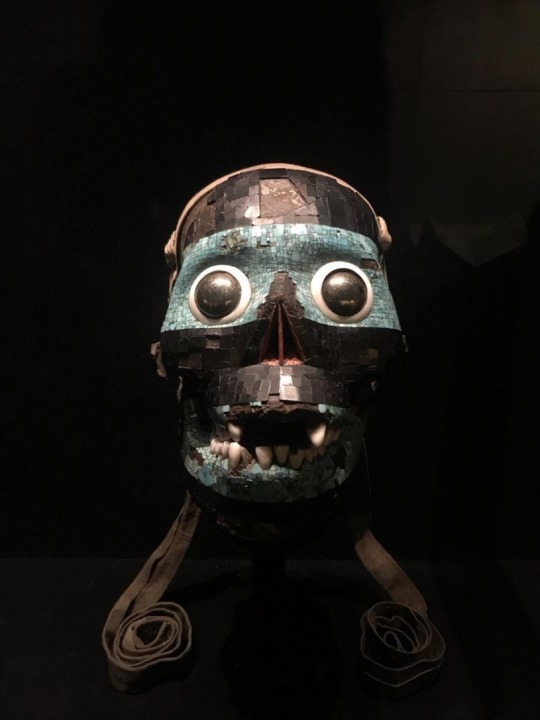

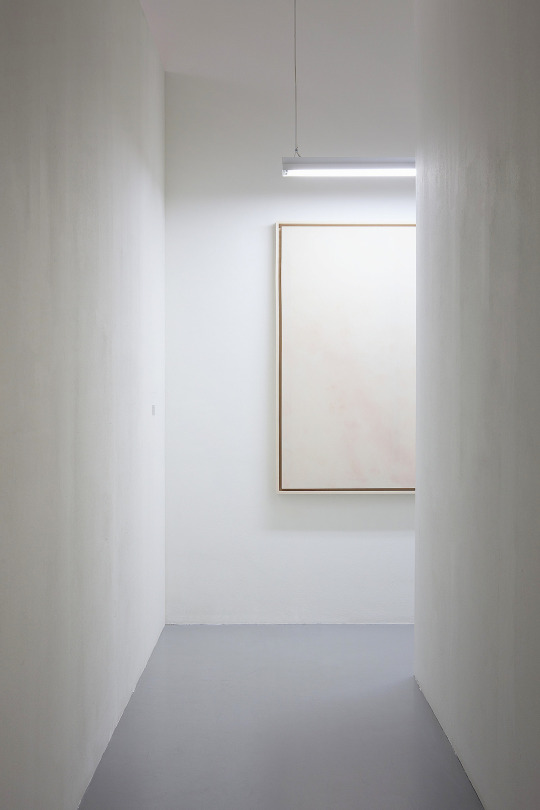
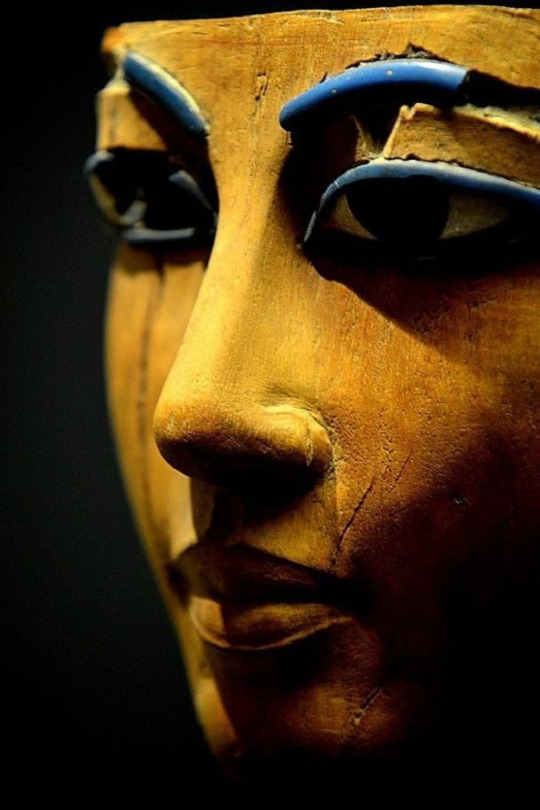
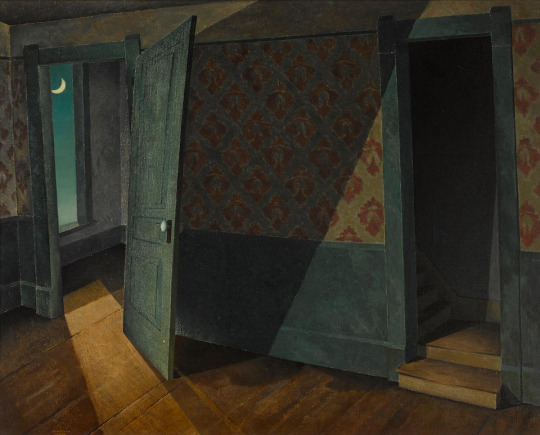
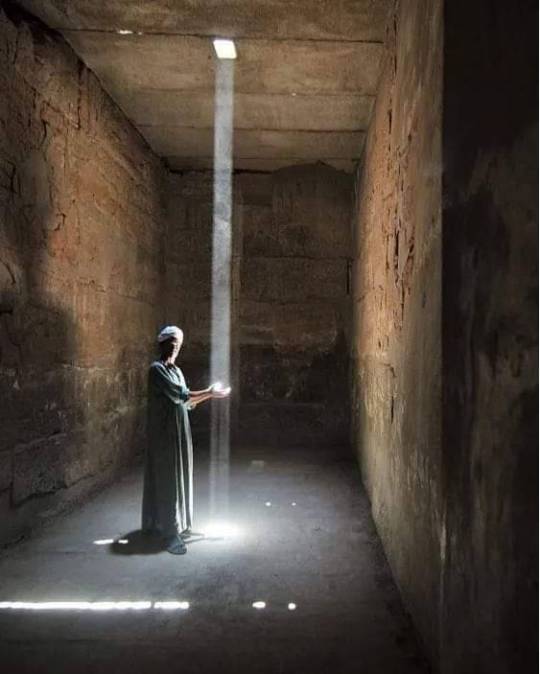
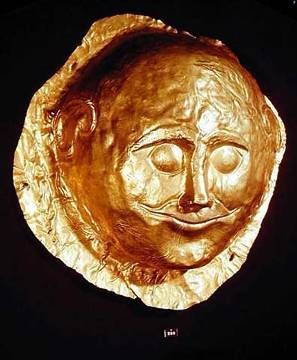
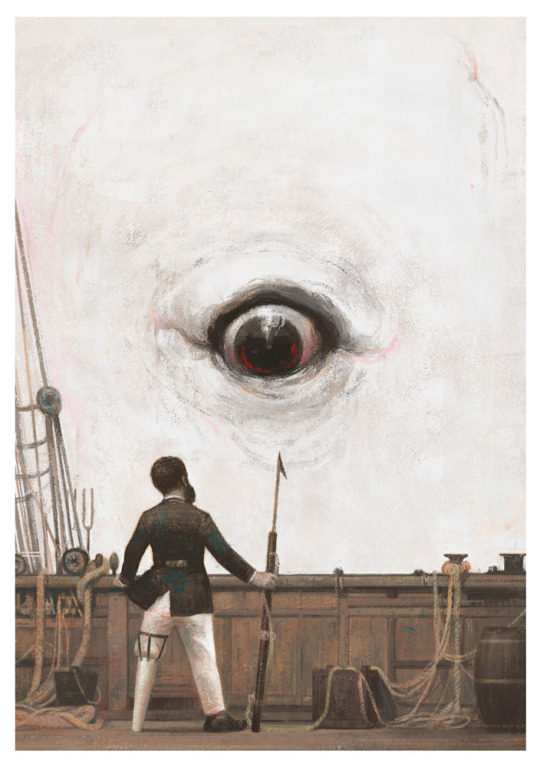
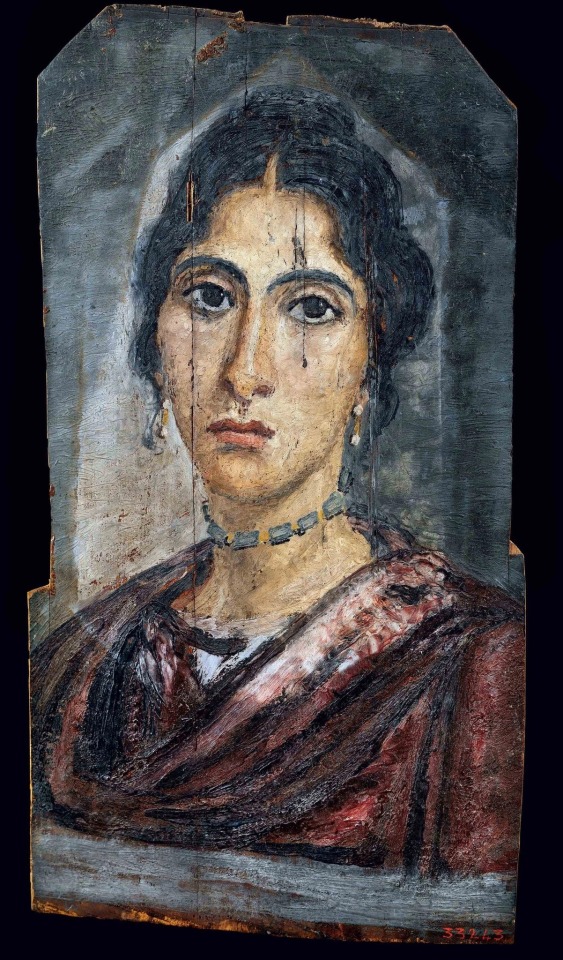

Credits:
Mosaic mask of Tezcatlipoca, Mexica peoples, ca. 1521-1400 CE
Paleolithic bull painting, Lascaux cave, France ca. 17000 bpe
Heaven, Simon Fujiwara, 2017
Egyptian funerary mask, late 18th dynasty, ca. 1400-1300 BCE
Habitation, Marvin Cone, ca. 1938-9
Sunbeams penetrating Temple of Amun-Re, Karnak Egypt, photographer unknown
Mycenaean death mask, Greece ca. 1600-1450 BCE
Moby Dick, Gerard Dubois, date unknown, artist website
Fayum mummy portrait of unidentified young lady, Roman Egypt, 2nd Century CE
Dryad, Andrew Wyeth, 2007
36 notes
·
View notes
Text
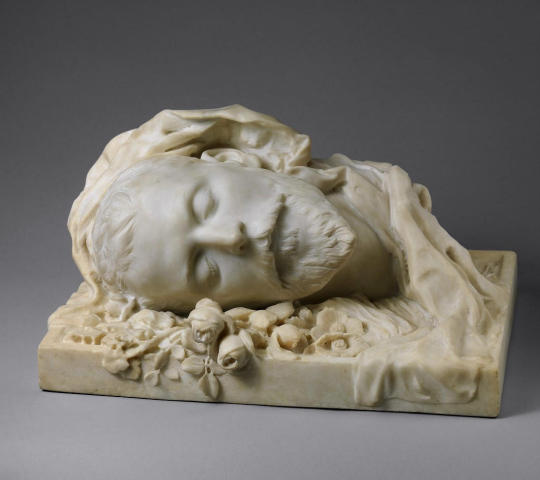
MWW Artwork of the Day (3/20/24)
Sarah Bernhardt (French, 1844-1923)
Funerary Portrait of Jacques Damala (1889)
Marble sculpture, 27.9 x 46 x 31.1 cm.
The Metropolitan Museum of Art, New York (Peluso Gift)
The great tragic actress, Sarah Bernhardt, was also a gifted sculptor. She carved this haunting memorial to her husband, the actor Jacques Damala (1855–1889), shortly after he had died of a drug overdose. Bernhardt envisions Damala as if on his deathbed, his youthful features captured in sleep. Yet the sheet covering him also is a winding shroud and the cut flowers wilt upon a marble slab that is reminiscent of a tomb.
9 notes
·
View notes
Text

“FUNERARY HEAD
Terra cotta
Ashanti, Ghana
The Ashanti people of Ghana place terra-cotta heads on the graves of the dead to protect them from malevolent forces.
The heads represent guardian spirits, and they may also be portraits of the deceased. In former times, they were placed on display during the funerals of Ashanti kings.”
From: “black images; the art of West Africa” by Naylor, Penelope; 1973.
12 notes
·
View notes
Text
My Mikoto playlist, for all your waiting for Double needs.
A Sleepwalker On This Mortal Shore/A Sleepwalker Gazing on Nirvana, by Hello Tanita-san/Tatsuya Kitani. (Self-cover)
Fun fact, the animation for this one was made by Mana Inoue, same person who did the PV for Weakness, How To Be in Love With You and Bring it On! You can definitely see the similarities with the first two, with the use of photographs 'glued' to 2D drawings. This one pushes the body horror a fair bit further, though. Be prepared for writhing brains made of realistic human fingers and such. (Also, the vocaloid version's CC subs has a mistake at 2:23)
OP by Hachiya Nanashi
Flight Instinct by Last Note
Run! by Polysics
Opening from Cells at Work Black, in which your average overworked salaryman's body is depicted as a 'black company' in miniature where their cells must struggle not so much to fix things as to just postpone the inevitable for another day, growing increasingly desperate and despondent all the while. IIRC, things got bad enough that the English version of the last few manga volumes shipped with suicide hotline numbers in the back.
Somehow still the cheeriest song in here.
Disordered Self-restraint Girl by otetsu (Note: flashing lights)
There's Supposed to be a Cheat Code for Happiness by UtataP
Ceremony Day and Manhole by Polyphonic Branch
Walk Tall and Die by TadanoCo/4o
You might know this one from the Eve cover, which has more views than the original. I really enjoyed the lyrics, both individual lines and as a whole. It's quite nice how they go from harsh and frustrated to softer as the song goes on.
There Was No Savior by YASUHIRO (Translation)
Disqualified Town by Yonaka
Fun fact: I picked this song before Mikoto's T2 cover got announced, so the fact that MV shows Miku wearing a gas mask is 100% a coincidence.
On An Empty Morning by kemu (Utaite ver.) (Translation)
I really like this song because the tone changes a lot depending on your interpretation. Does the calm tune represent the singer at long last achieving peace after terrible pain, leading a life that's mundane and sometimes difficult but ultimately worthwhile? Or have they just sunk into apathy, emotionlessly sacrificing other people just to continue their empty lifestyle, having so little concept of happiness that they actually think they're fulfilled by this?
Both options are pretty interesting. And well, in the context of Mikoto's crime, "I take someone’s fleeting future and use it as a stepping stone" takes on a new meaning.
I Hear the Sound of Someone Else's Business by Ame no MurakumoP (Translation)
I linked to a fan PV that honestly deserves more attention (less than 30 views, seriously!?). The PV uses a lot of white and dark blue, but I don't think it switches fast enough to require a flashing lights warning? The official upload uses a still image, if it helps.
Synesthesia Ghost by Nekobolo/sasanomaly
La Mersonnalité by Misato Kurematsu
Don’t Carry Our Memories Away by rinri (EMA ver.) (Translation)
The EMA cover isn't official or anything, but it's my favorite version so I'm gonna link it too. The original does have the advantage of having Mikoto Meika singing it, though.
It's kind of interesting how different the illustrations for the original and the cover feel: in the original we see the boy smiling desperately wide as he faces towards the shore, like he's reassuring somebody watching. Meanwhile in the cover he looks indifferent or perhaps annoyed, but for the last chorus he turns around fully and splashes around as if inviting you to follow him.
Childhood by MushiP
The Good Child and the Fox by Kikou
Silver Warp by YUUKI MIYAKE/Napoli-P (Utaite ver.) (Translation)
I was going to write about how Ore would be the brother that gets caught when escaping and is implied to stab his parents, while Boku is the one that gets away... and then I noticed the funerary portrait at the end. Just pretend it isn't there, I guess Or take it metaphorically.
The Full-Throttle Abscondence. by Pekoro
Delusion Girl by Touyu
This playlist is mostly based on Boku, but I see this song as being about both alters. The whole "crushing despair of normalcy" part being obviously Boku, and the desire to save somebody to justify your own existence being Ore. I think that if Fuuta were a bit older this song would fit him pretty well too.
Hide and Seek -reprise- by BuzzG (Translation)
Magician In Love by Koyori
Imposter Advisory by 150p (Utaite ver.) (Alternate translation) (Note: flashing lights)
Perfect Crime Love Letter by 150p (Utaite ver. + alternate translation) (Note: flashing lights)
Red is Scary by Iyowa (Translation)
Cyber Thunder Cider by EZFG
It Takes 3 Minutes to Listen to a 3 Minute Song by Owata-P
There's No One Who's Bad at Art by Suttaka
Love, Me Normally by Will Wood (Lyrics)
Dense Forest of Morals by OPA (Translation)
I'm Controversial by Ado (Note: flashing lights)
Fraulein=Biblioteca by nyanyannya
I'm imagining this one being sung by Es, or at least Mikoto's impression of Es (kind of like the shadow Es from Backdraft). I think in a way it fits all the guilty prisoners, but the lines about sleep talk and "I'll make you remember your sins" make it even better for Mikoto especifically.
No.4 THE EMPEROR by Owata-P (Translation)
I Can't (Mar)read the Situation by CosMo
This one is more of a "How Mikoto views the world" song than one strictly about Mikoto. Don't neglect your social skills in favor of your true self or you will be doomed to a life of envy, regret and isolation. Also the Earth will explode. Truly a sobering reminder.
A Lethargic Coup d'état by Last Note
The Taste of Cockroach by Maretu
Most people would probably think of this one as a Fuuta or Muu song, and I do agree (more Muu than Fuuta imo). But honestly, while Mikoto would never start a bullying campaign, I can totally see him as a bystander, the kind of person who insist that everyone should just talk it out and then everything will be fine. Of course, we still don't know what caused his murder, only that apparently being kidnapped was an improvement. So you could also view him as the victim, which gives new meaning to those weird lines in the middle of the song that really don't sound like they're from the same person as the rest...
But mostly, I added this song for the "shadows lurking under the light/denial" angle, which is theme for the last section of the playlist. I don't really know enough about music to sort it by genre/sound similarities, so I organized it by themes! Or at least I tried to put similar songs together so they'd "flow" into each other.
Everything is an Illusion by Pongini (Translation in the replies of the pinned comment)
I Look Up as I Deliver by POLYSICS (Alternate translation)
The ending for Cells at Work Black. Fun fact, this song's name is most likely based on I Look Up as I Walk AKA Sukiyaki.
14 notes
·
View notes
Text
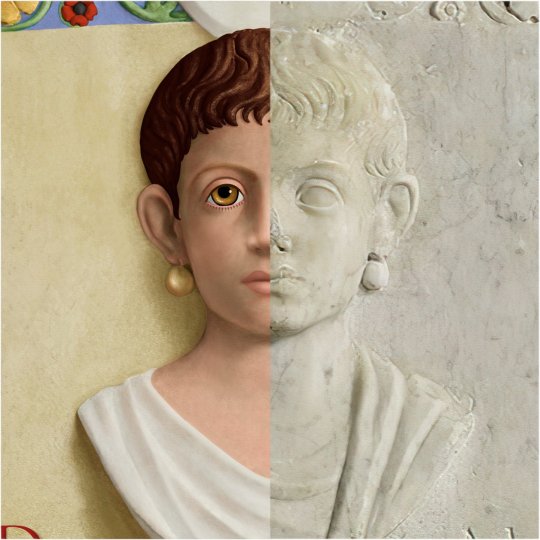
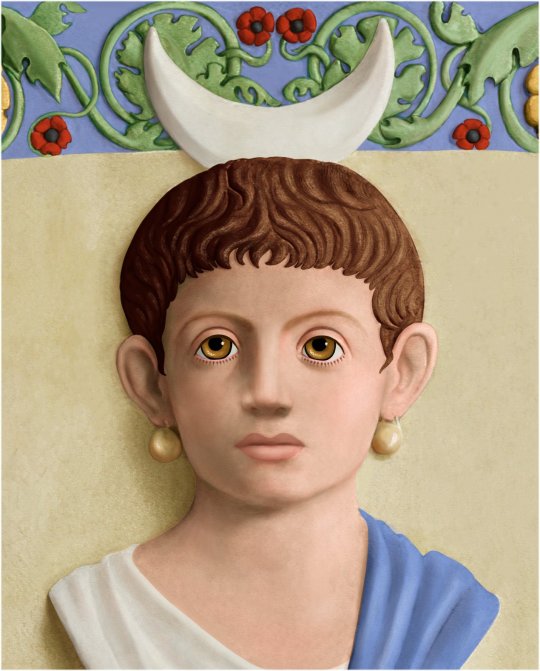

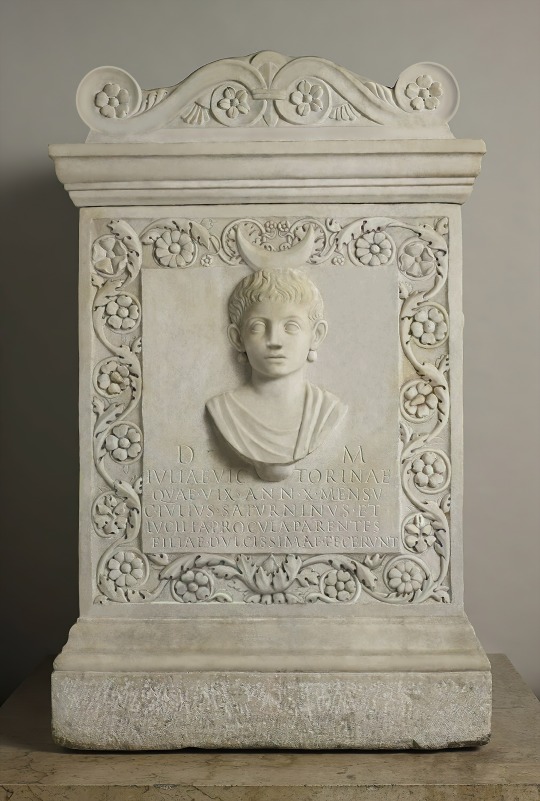
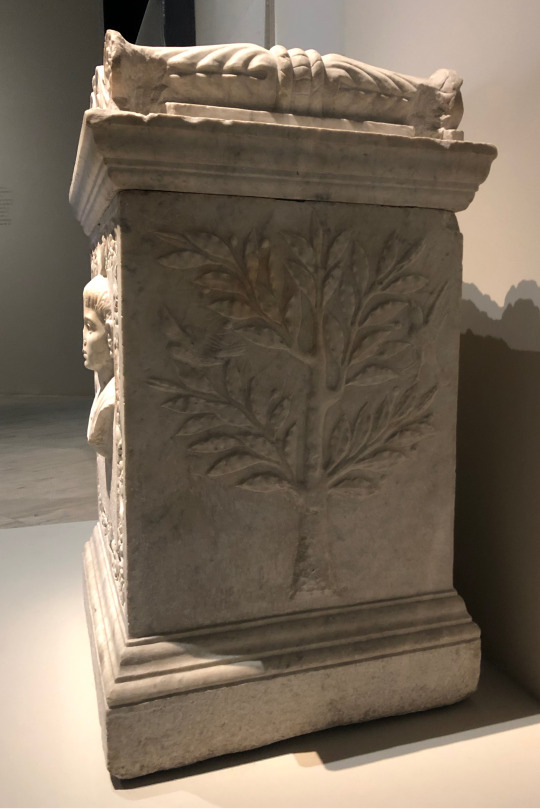
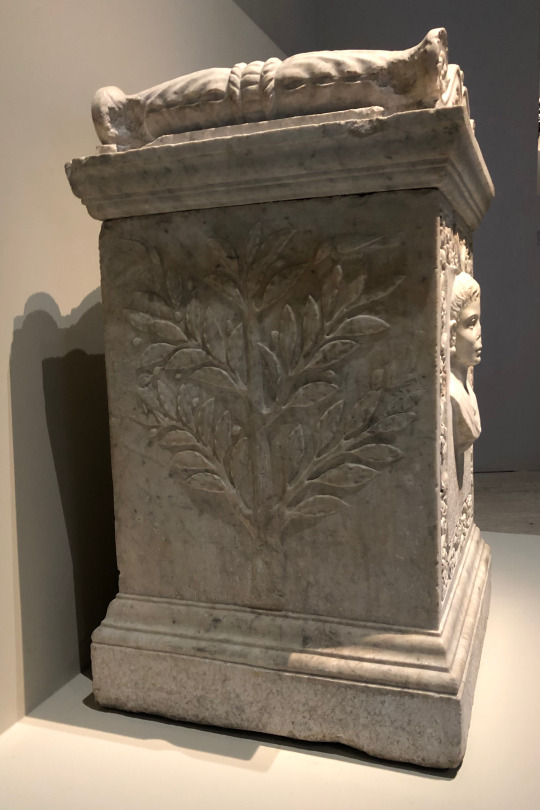
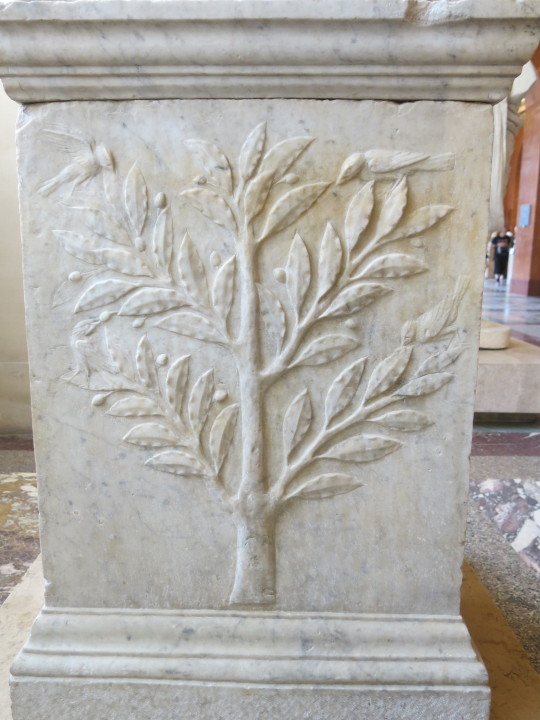

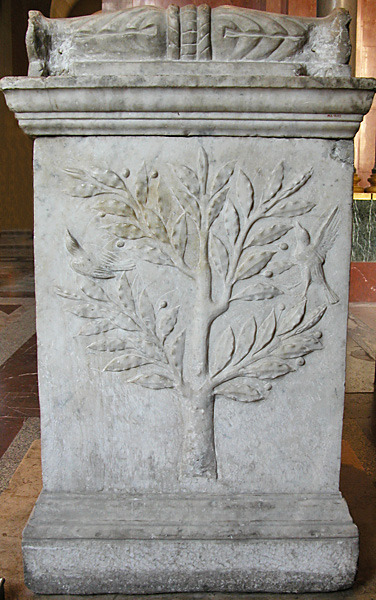
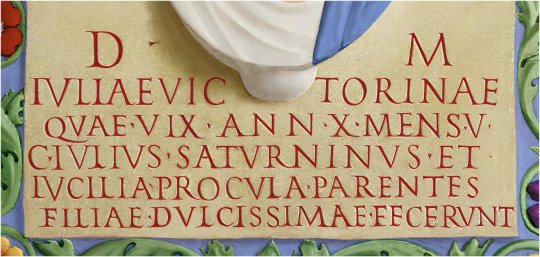
"Funerary altar of Iulia Victorina. Marble. Last quarter of the 1st century CE. The altar is dedicated to the en:manes of Iulia Victorina dead at 10 years and 5 months old. Purchase 1863. Louvre museum (Paris, France). Portrait on the front of the 10 year old girl at her death, garlanded in a floral frame, and on the back as the young matrona she would never become. Trees on each (side). Color by @chapps on twitter.
While Julia Victorina is only one child in the unhappy statistic that half of all Roman children died by the age of ten, her death in the last quarter of the 1st century CE is personalized by the unique and costly monument her parents set up in her memory. With this elegant altar, now in the Louvre Museum in Paris, Gaius Julius Saturninus and Lucilia Procula, who are otherwise unknown by rank, ancestry, or situation, memorialized their grief and hopes for a young daughter taken from them prematurely. The monument would have been placed in a family tomb and held a cinerary urn containing the child's ashes. It is a rectangular block of white marble, elaborately carved on all four sides and crowned by a marble cover gracefully decorated with motifs (mouldings, volutes, and blossoms) that echo those carved on the front and back of the lower stone. The front of the altar bears the dedicatory inscription and features a portrait bust in high relief of the lovely face of a girl, framed by a wide border of acanthus leaves and variegated flowers, symbols in the Mediterranean world of eternal life. Julia Victorina, gazing pensively off to her right, wears ball-shaped pendent earrings, probably of gold; her shoulders are draped, her hair is styled almost boyishly and is crowned by a crescent moon, at once a symbol of eternity and association with Diana in her role as the moon-Goddess. On the back of the altar she appears again, similarly framed with botanicals, but now as a young matrona, as her parents had hoped in a few years to enjoy her; her face is solemn and thinner but recognizable as the child she was. She looks directly at the viewer, wearing the married woman's stola, a palla draped over one shoulder and the same pendent earrings; her hair is arranged in a more matronly style, topped by a radiate crown that symbolizes her apotheosis in the heavens and her immortality. The short sides of the altar are decorated with a flourishing laurel tree, an evergreen sacred to Apollo, God of the sun; within its branches hover two birds, possibly ravens, his sacred bird, seen here together with laurel-crowned Apollo in his shrine. This extraordinary altar, with its portrait busts and floral designs promising immortality, offers moving testimony to the grief of Victorina's parents over the loss of a beloved child.
The dedicatory inscription is crowded into the space below the child’s bust, which awkwardly divides the girl's cognomen. The words are written in square capitals over five lines of diminishing size, with prominence given to the Di Manes and the girl's name. The letters are well formed and centered, with medial dots (interpuncts) separating the words in lines 3-6.
Latin:
D[is] M[anibus]
IVLIAE VIC TORINAE
QVAE• VIX[it]• ANN[is] • X• MENS[ibus]• V•
C[aius]• IVLIVS• SATVRNINVS• ET
LVCILIA• PROCVLA• PARENTES
FILIAE• DVLCISSIMAE• FECERVNT
English:
To the spirits of the dead
Julia Victorina
Who lived for ten years and five months
Gaius Julius Saturninus and
Lucilia Procula
Parents of this sweetest daughter
Had this monument made
Notes to Funerary Inscription for Victorina:
Di Manes, m. pl.
the collective spirits of the dead, the divine spirits. DM is a common abbreviation for the dedication of a funerary monument to the spirits of the dead and thus is in the dative case. These letters or the words they stand for are regularly found at the head of funerary inscriptions dating from the end of the 1st century BCE through the 2nd century CE.
Iulia, -ae f.
Julia is the proper name of women born into the gens Iulia. Victorina appears to have inherited the nomen gentilicium from her father. The name of the deceased is either in the dative case as the dedicatee of the inscription, or the genitive as the possessor of the DM.
Victorina, -ae f.
The dead girl's cognomen.
menses, menses m.
month. Both annis and mensibus are ablatives of time following vixit. Some inscriptions included days as well.
Saturninus, -i m.
The cognomen of Victorina's father is found during the Republic and the Empire. There was a centurian named Gaius Iulius Saturninus who came from Chios and served under the Flavians in a unit of Spaniards in Egypt, but no firm connection can be made.
Lucilia, -ae f.
Lucilia is the proper name of women born into the gens Lucilia; Victorina's mother's cognomen is Procula.
parens, -entis m./f.
parent. It is in the nominative plural, in apposition with Saturninus and Procula, who are the subjects of the verb fecerunt.
dulcis, -e
sweet, lovely, dear, kind. The adjective is in the superlative degree. It modifies filiae; both are in the dative case, in apposition with Iuliae Victorinae.
[hoc monumentum]
this phrase normally follows the verb of dedication (fecit/fecerunt) in funerary inscriptions. Monumentum is the regular word for a Roman tombstone. Sometimes the entire formula is omitted as unnecessary or for lack of space or money."
-taken from feminaeromanae, vroma, and wikipedia
More pictures and sources on my blog: https://paganimagevault.blogspot.com/2022/05/funerary-altar-of-iulia-victorina-1st-c.html
#ancient rome#roman statue#pagan#paganism#apollo#artemis#funerary art#european art#roman art#ancient art#italy#archaeology#reconstruction#art#ancient history#art history#1st century
350 notes
·
View notes